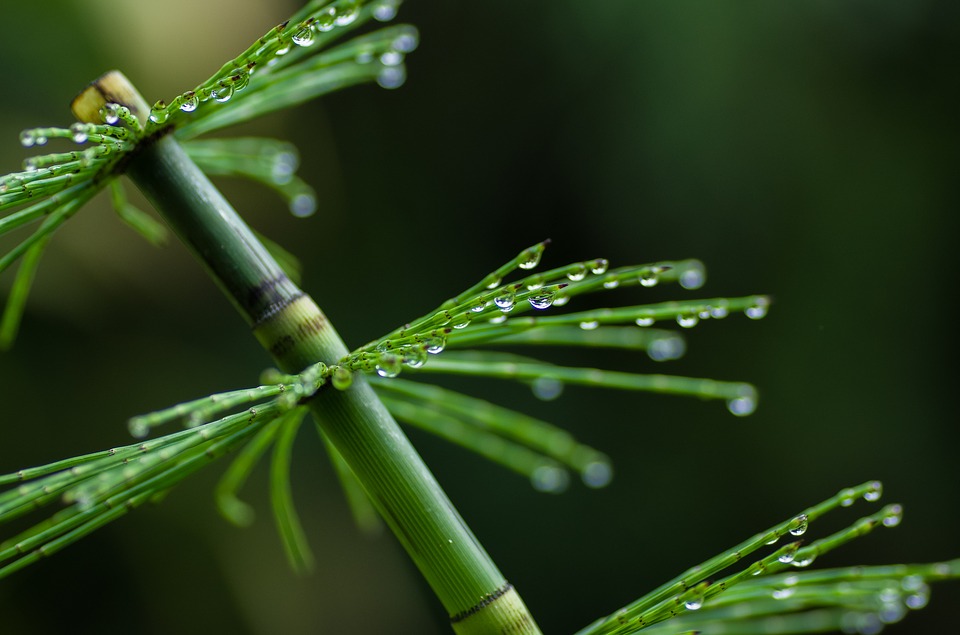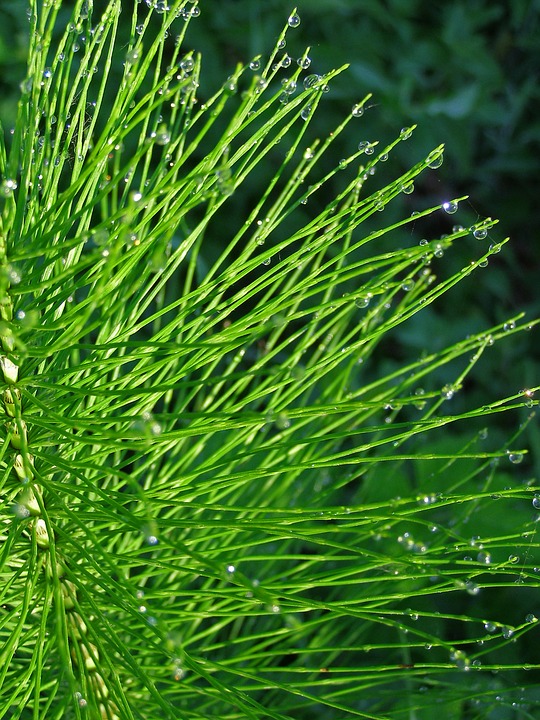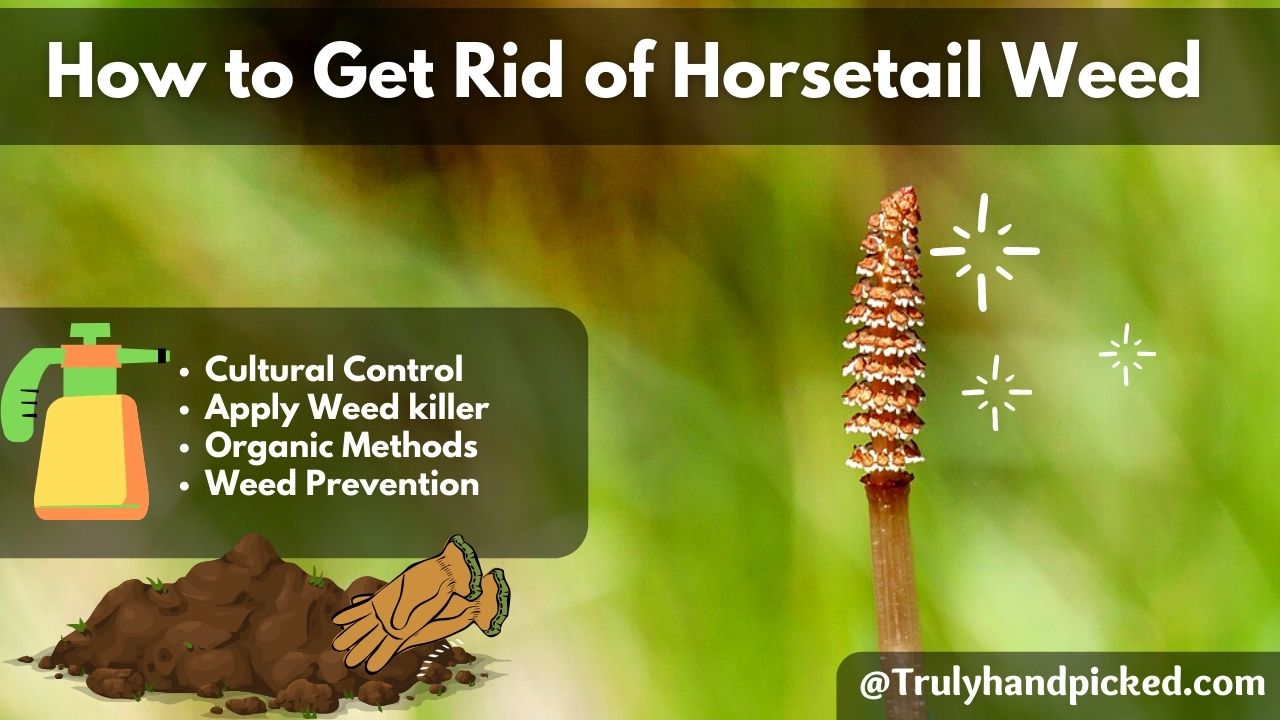Horsetail Weed/ Equisetum arvense is a vigorous weed that grows in your grass lawn and garden.
It grows deep roots tunneling up to 3-7 feet. Also, widespread roots make this plant perennial and persisting in nature.
Even if you remove it, it can regrow from its parts, spores, and from deep-rooted rhizomes. In other words, it can be expelled quickly, fine now let’s look into quick ways to kill the horsetail weed.
Horsetail Weed Removal Quick Tips
- Pull, bag, and burn
- Avoid horsetail weed-friendly soil (Wet and soggy)
- Make soil nitrogen-rich and friendly for lawn grass
- Make your soil hostile to weeds (Well drained and non-acidic soil)
- Organic weed killers
- Use wd40 & Vitax SBK tough weed killer to control
- Add lime to increase the pH
- Mow grass tall and let grass dominate
- Tread, crush, and then spray weed killer
- Mulching and covering plastic (choke horsetail)
- Nurturing grass will control weeds
- Using Vinegar
How to Get Rid of Horsetail Weed
Organic & Cultural Prevention of Horsetail and Control
Horsetail is really a pernicious weed that is not that easy to get under control. Yet if you prefer organic and cultural control these are steps to follow.
- Be vigilant to look for new shoots and infestations in spring and pull them or cut them out.
- If you miss the small shoots in early spring you may see a greenish-light-brown asparagus-like stem with a cone top. This contains the spores and once it spread it will grow wherever it lands.
- So make sure you cut them and if possible use a shovel to dig a little deeper to remove the stem and bag it for disposal.
- Be extremely careful not to leave any part of the plant you have cut or dug, as it can grow from fragments of it.
- If that happens it will make it even worse, resulting in a new shoot with deep roots.
- So bag them and burn them or make them rot in a bin.
- Don’t dump it in the garbage, or toss it to compost, you are giving it a second chance.
Related: How to get rid of dandelions
Killing Horsetail with wd40?
Spraying wd-40 on the leaves may show as if the plant is really dying. But with its huge network under the surface, they will surface with a new sprout. So it is not easy they them off your lawn.
- Using wd40 directly on soil nearly burns and stops anything from growing on that spot. So if it’s a concrete path you can use this wd40. But in a lawn area, we won’t recommend spilling wd40.
- But you can try the crush, tread, and spray wd40 to keep it under control for a little longer period.
- Not just for killing weeds, this solution also keeps the pests away.
Vitax SBK for horsetail weed
This is a specially formulated tough weed killer which is good to fight weeds like horsetail, mares tail, thistle, bramble, and docks. While the formula protects your grass, yes it’s not harmful to your lawn and only kills/controls weeds.
How long for SBK to work: This tough weed killer takes time to work, and you can witness the results in 2weeks.
How long does it stay in your soil: Don’t reapply the SBK before 6 weeks. As it stays there that long, also avoid this selective weed killer in drought and winter.
Though it not going to harm your grass, it may harm other cultivated crops, hedge plants, corner plants, and others. So keep it away from your other plants.
Related: How to get rid of clover

Natural Ways to Discourage & Prevent Horsetail Weed
Horsetail is happy to grow in acidic, poor, and wet soil be it clay or sandy and dry. Enrich and make your soil less hospitable for horsetail and encourage other healthy plants to compete for the room.
Keep your garden or lawn soil well-drained to make it less suitable for this weed which loves wet to moist soggy soil.
By now, you know horsetail loves acidic soil, so test and make your little alkaline and be in a desirable pH range for other plants. Add lime to increase pH and make your soil less acidic and hospitable for grass and garden plants to choke out horsetail weeds.
Increase the nitrogen content in your soil. A few weeks later after adding lime, add some good slow-release nitrogen-rich fertilizer boost to your soil. That stimulates your lawn grass or garden plants for fresh green foliage growth and makes deeper roots.
These steps may help to keep the weed dormant and prevent it from sprouting. Yet it may take a few years to totally kill the weed as it creeps to find an open spot to shoot up.
So keep an eye on your lawn so it doesn’t shoot its horsetail cone with spores in a new patch. This puts an end to it unless your neighbor’s lawn has poor maintenance to allow its creeping root system.
Complete Horsetail Weed Removal and Control as a Short Web Story
Horsetail Weed Killer
Horsetail weed is like a cockroach in your garden or lawn. If you see it has gone and it’s under control it comes back like a batman joker in another season. It has a vascular system which means you can use a systemic weed killer.
But it has thin leaves and a waxy coating that doesn’t allow the spray to penetrate. So here is a trick you should try to kill horsetail weed, tread, crush the plant, and then spray the weed killer be it Vitax SBK or 2,4-D, or halosulfuron-methyl.
This makes your weed killer enter into its vascular system through the wounds you have made. This will reach the whole plant including its stem and roots. Yet you will need multiple applications and patience as it depends on how large is the established root system.
When to spray: Best to spray the weed killers during the peak season for this weed between May to October.
In summer spray in the evening to let it stay on the weed before it gets evaporated by the next day. In spring go for an early morning spray to avoid dew drops rolling out during the overnight dew.
Note: Make sure tread on and crushing doesn’t leave any fragments on the ground, use a newspaper to bag anything that falls.
Burn or let it rot in a bin or concrete floor. Also, don’t crush the light brown horsetail with a cone, which simply spread its spores.

Using Vinegar for Horsetail Control
Horticulture vinegar is non-toxic and a good-to-go option for organic garden lovers. Use a strong vinegar solution with little dish soap to get it to stick to the leaves.
As said above trampling and spraying have shown better results. The acetic acid in vinegar penetrates through the wounds to weaken the leaves and stem.
Also, apply the new shoots out from the ground to lessen the infestation and slowly kill the plant. It’s a better option if you have an edible garden or sensitive plants and pets.
Though it is not toxic for you, make sure you apply the spray only on the horsetail patch and as it may harm the other plants nearby.

Horsetail Weed Removal Quick Recap and QA
Things you will need to kill horsetail weed
Patience: It’s deep-rooted with rhizomes to spring back in a new spot, so it takes time(a few seasons).
Systemic Week killer and lawn weed killer: Spray vinegar (organic alternative) or wd40, Vitax SBK or 2,4-D, or halosulfuron-methyl over crushed, cut, or trampled horsetail plant.
Hand pulls or digs and bag: works to kill the weed infestation but with caution, bag the cut parts of the weed and burn or let it rot in a bin. Also, look for new sprouts to kill them early before it produces horsetail with spores
Enrich and keep your soil well-drained: Add soil amendment, test pH, add lime and enrich with nitrogen to nurture your grass and plants to compete with the weed.
Mulching and covering plastic: Yes it may work for you but, in long run, it won’t help this stubborn weed. As you suffocate that patch, look for loopholes to spread its root to shoot up in a new spot.
How To Identify The Weed is Horsetail
- This non-flowering evergreen plant falls under the genus Equisetum and is also called a mare’s tail, scouring rush, snake grass, or puzzle grass.
- It has a deep and widespread root system and an underground stem (rhizomes).
- It shoots above the ground and the foliage looks like a fir tree and connected pipes with a horse tail tip, that’s how it got its name.
- Horsetail loves full sun and partial shades and grows in bed borders, lawns, and gravel paths.
- Equisetum arvense species grows up to wide and tall up to 2 feet. While the fertile wheatish stems produce a cone structure on the stem which helps to spread spores.
- Its foliage has a waxy coating, making this weed hard to kill.
- It is not edible and safe for livestock animals like cows, horses, and sheep.
FAQ
Does Glyphosate (Roundup) kill horsetail: No, the roundup is not that effective against this weed with waxy-coated thin leaves. Horsetail is resistant to glyphosate, if you had any success please leave it in the comment section.
Toxic to dogs: horsetail weed is not toxic to dogs, yet it’s toxic for grazing animals like cows, horses, and other farm animals. Though horses and sheep avoid this noxious weed, it’s better you use fencing to prevent your livestock from grassing the horsetail-infested zone.
How to easily prevent horsetail from spreading? do soil maintenance, remove top shoots repeatedly, and check stems with cones before spreading the spores in spring.
Reference: horsetail overview, dengarden, herbicides, what are horsetail weeds
